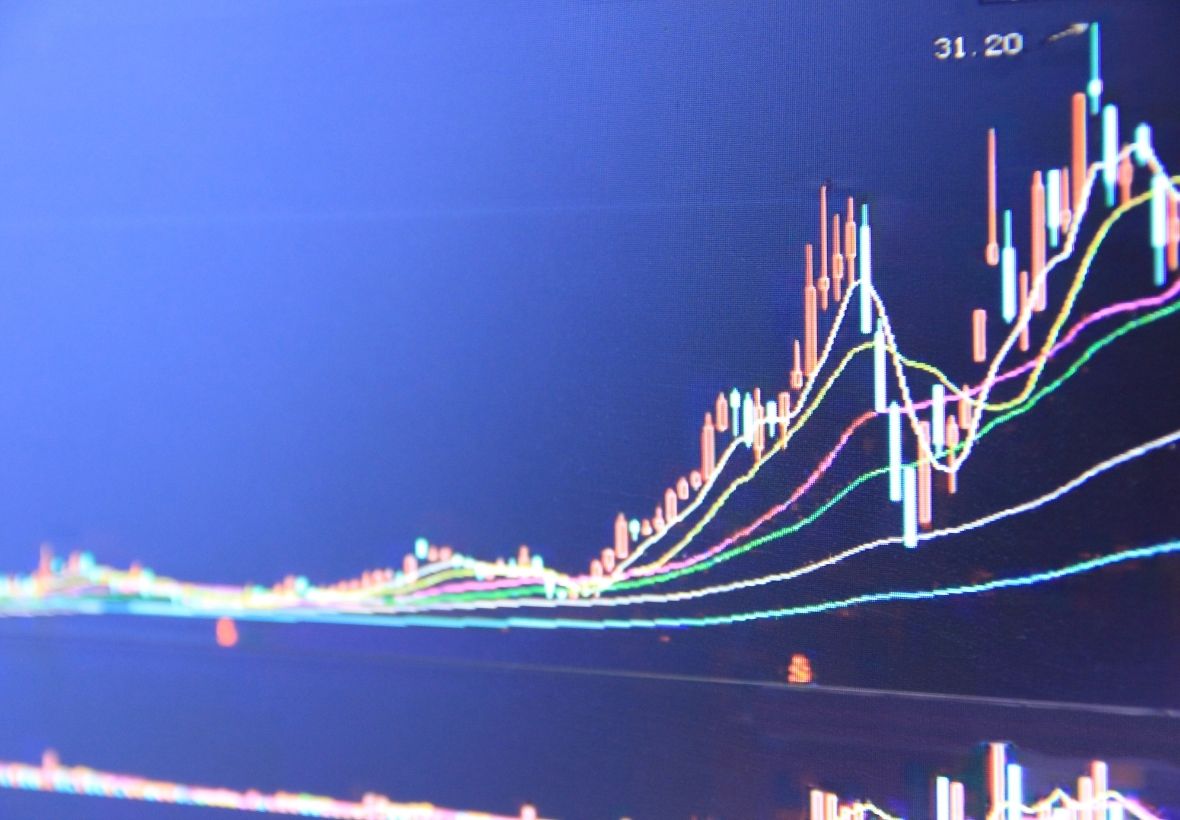In this fast-paced world of financial markets, traders are constantly seeking ways to gain an edge. Trading bots offer a promising solution by automating trading activities based on predefined strategies. By following the right set of strategies, traders can enhance their chances of success and profitability.
Understanding Trading Bots
Trading bots are software programs that use predefined algorithms to execute trades automatically. These bots can analyze market data, identify trading opportunities, and execute orders in real-time. They can operate 24/7, allowing traders to capitalize on market movements even when they are not actively monitoring the markets.
Setting Clear Objectives
Setting clear objectives is a crucial step when utilizing trading bots for automated trading. By defining your objectives, you provide a roadmap for your trading activities and ensure that your strategies align with your goals. Here are some key points to consider when setting clear objectives:
- Define Profitability: Determine the level of profitability you aim to achieve with your trading bot. This involves setting realistic profit targets based on your risk tolerance and investment horizon. Clear profitability objectives help you assess the effectiveness of your strategies and track your progress.
- Establish Risk Tolerance: Assess your risk tolerance and define the maximum acceptable level of risk for your trading activities. This involves considering factors such as your financial situation, investment goals, and risk appetite. Clearly defining your risk tolerance helps you select appropriate strategies and manage your exposure effectively.
- Identify Investment Horizon: Determine the duration for which you intend to hold your positions. Are you looking for short-term gains or long-term investments? This decision influences the choice of strategies and the frequency of trades executed by your trading bot.
- Consider Capital Allocation: Evaluate the amount of capital you are willing to allocate to automated trading. This involves setting a budget and determining the percentage of your overall portfolio dedicated to trading with bots. Clear capital allocation objectives help you manage risk and avoid overexposure.
- Specify Asset Classes: Decide on the asset classes you wish to trade with your bot. Whether it’s stocks, cryptocurrencies, forex, or commodities, identifying the specific asset classes allows you to focus your strategies and optimize your bot’s performance.
- Establish Performance Benchmarks: Set performance benchmarks to evaluate the success of your trading bot. This involves defining metrics such as return on investment (ROI), win rate, maximum drawdown, and risk-adjusted performance measures. Regularly assessing your bot’s performance against these benchmarks helps you make informed decisions and make necessary adjustments.
- Consider Diversification: Determine whether you want to focus on a single strategy or diversify your bot’s activities across multiple strategies. Diversification can help mitigate risk and enhance the stability of your overall trading approach.
By setting clear objectives, you provide a solid foundation for your trading bot strategies. These objectives serve as guiding principles, helping you make informed decisions, measure performance, and stay focused on your financial goals. Regularly reassess your objectives as your trading journey progresses to ensure they remain aligned with your evolving needs and market conditions.
Trend Following Strategy
A popular trading bot strategy is trend following. This strategy aims to identify and capitalize on sustained price movements in a particular direction. By analyzing historical data and identifying trends, the bot can enter trades when a trend is established and exit when the trend shows signs of reversal.
Mean Reversion Strategy
The mean reversion strategy focuses on the concept that prices tend to revert to their average over time. Trading bots employing this strategy identify situations where prices have deviated significantly from their mean and execute trades with the expectation that prices will eventually return to the average.
Breakout Strategy
The breakout strategy is a popular approach used in trading bots to identify and capitalize on significant price movements. This strategy aims to take advantage of price breakouts, where the price of an asset breaks through a key level of support or resistance. Here is an overview of the breakout strategy, along with a table highlighting its key components:
|
Component |
Description |
|
Identify Key Levels |
The first step in implementing a breakout strategy is to identify key levels of support and resistance on the price chart. These levels act as barriers that the price needs to break through to establish a new trend. Traders often use technical analysis tools, such as trendlines, moving averages, or Fibonacci retracement levels, to identify these key levels. |
|
Confirmation of Breakout |
Once potential breakout levels are identified, traders wait for confirmation of the breakout before entering a trade. This confirmation can be achieved by observing price action and volume patterns. Common breakout confirmation signals include a strong price close above a resistance level or a significant increase in trading volume during the breakout. |
|
Entry and Stop-loss Levels |
When a breakout is confirmed, traders enter a trade with a long or short position, depending on the direction of the breakout. They set an entry level slightly above the breakout point to confirm the validity of the breakout. Additionally, a stop-loss order is placed below the breakout level to limit potential losses if the breakout fails and the price retraces. |
|
Profit Targets and Trailing Stops |
Profit targets are set based on the anticipated price movement after the breakout. Traders often use technical analysis techniques, such as measuring the distance between the breakout level and a subsequent swing high or low, to estimate potential profits. To maximize gains, trailing stops can be employed, allowing the trade to stay open as long as the price continues to move in the desired direction. |
|
Risk Management |
Proper risk management is essential when using the breakout strategy. Traders should determine the appropriate position size based on their risk tolerance and account balance. Additionally, they may consider implementing additional risk management techniques, such as adjusting stop-loss levels as the trade progresses or using a trailing stop to protect profits. |
The breakout strategy can be effective in capturing significant price movements and profiting from trend continuations. However, it is important to note that breakouts can result in false signals, where the price briefly breaks out and then reverses. Therefore, proper risk management and confirmation of breakouts are crucial to minimize potential losses.
By incorporating the breakout strategy into trading bots, traders can automate the process of identifying and executing breakout trades. This approach allows for timely and efficient trading decisions, helping traders take advantage of price volatility and potential market opportunities.
Arbitrage Strategy
The arbitrage strategy is a trading approach utilized by trading bots to capitalize on price discrepancies between different markets or exchanges. This strategy involves buying an asset at a lower price in one market and simultaneously selling it at a higher price in another market, thus profiting from the price difference. Here is an overview of the arbitrage strategy, along with a table highlighting its key components:
|
Component |
Description |
|
Identify Price Differences |
The first step in implementing an arbitrage strategy is to identify price differences for the same asset across different markets or exchanges. Traders use real-time market data and sophisticated algorithms to detect instances where the same asset is priced differently in separate markets. |
|
Evaluate Feasibility |
Once price differences are identified, traders need to assess the feasibility of executing an arbitrage trade. Factors such as transaction costs, liquidity, and trading volume need to be taken into account. If the potential profit from the price difference exceeds the transaction costs, the arbitrage trade may be deemed feasible. |
|
Execute Trades |
When an arbitrage opportunity is identified and deemed feasible, trading bots can automatically execute the trades. The bot will buy the asset at the lower price market and simultaneously sell it at the higher price market, taking advantage of the price discrepancy. |
|
Manage Risks |
Proper risk management is crucial when employing an arbitrage strategy. Traders need to consider the time it takes to execute the trades, as price discrepancies can narrow or disappear during the execution period. Setting appropriate stop-loss orders and monitoring market conditions in real-time can help mitigate potential risks. |
|
Track and Analyze Performance |
It is important to track and analyze the performance of arbitrage trades to assess the effectiveness of the strategy. Traders monitor the profitability of executed trades, taking into account transaction costs and other expenses. By analyzing historical performance, traders can refine their arbitrage strategies and identify patterns or market inefficiencies. |
The arbitrage strategy aims to exploit temporary price discrepancies between markets, leveraging quick and simultaneous transactions to generate profits. However, it is important to note that arbitrage opportunities may be short-lived and highly competitive. Trading bots provide an advantage in executing trades swiftly and accurately, maximizing the potential profitability of arbitrage opportunities.
By incorporating the arbitrage strategy into trading bots, traders can automate the process of identifying and executing arbitrage trades across multiple markets. This approach allows for efficient and timely trading decisions, taking advantage of price differentials and potential market inefficiencies.
Risk Management Techniques
Effective risk management is crucial when utilizing trading bots. Implementing techniques such as setting stop-loss orders, position sizing based on risk tolerance, and diversification can help protect against substantial losses and ensure a more consistent and controlled trading approach.
Backtesting and Optimization
Before deploying a trading bot strategy, it is essential to conduct thorough backtesting and optimization. Backtesting involves analyzing historical data to assess the performance of the strategy. Optimization allows traders to fine-tune the parameters of the strategy for optimal results.
Learning from Past Trades
Continuous learning is essential in the world of trading. Analyzing past trades executed by the trading bot can provide valuable insights into the performance of strategies. Identifying patterns, evaluating trade outcomes, and making adjustments based on lessons learned can help improve future trading results.
Trading bots offer an automated and efficient way to participate in financial markets. By implementing effective strategies and following best practices, traders can maximize the potential of these bots to generate profits. However, it is crucial to remember that trading bots are tools and not guarantees of success. Regular monitoring, adaptability, and continuous learning remain essential to stay ahead in the dynamic world of automated trading.
FAQs
- 1. Can trading bots guarantee profits? Trading bots are not foolproof systems and cannot guarantee profits. They are tools that execute trades based on predefined strategies, and success ultimately depends on the effectiveness of those strategies.
- 2. How do I choose the right trading bot? When selecting a trading bot, consider factors such as track record, transparency, customer reviews, and customer support. Choose a bot that aligns with your objectives and has a proven track record of delivering consistent results.
- 3. Should I rely solely on trading bots for trading activities?
While trading bots can automate certain aspects of trading, it is still important to monitor their performance, adapt strategies, and stay informed about market news. Human involvement and decision-making remain crucial for successful trading. - 4. Are trading bots suitable for beginners? Trading bots can be beneficial for beginners as they can automate trading activities. However, it is important to have a basic understanding of trading principles and strategies before relying solely on bots.
- 5. How can I assess the performance of my trading bot strategy?
Backtesting and optimization are essential for evaluating the performance of trading bot strategies. By analyzing historical data and fine-tuning parameters, traders can assess the effectiveness of their strategies.




Leave a Reply